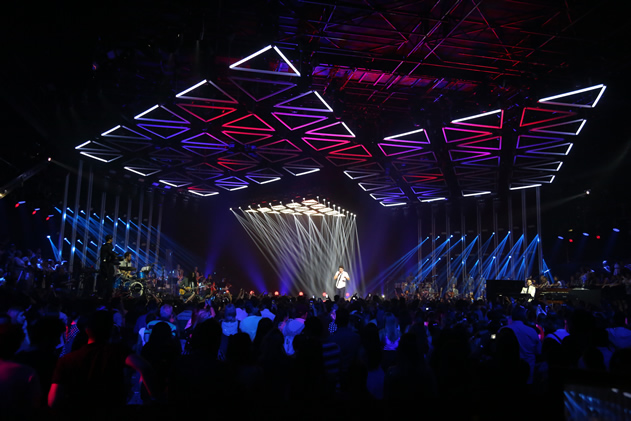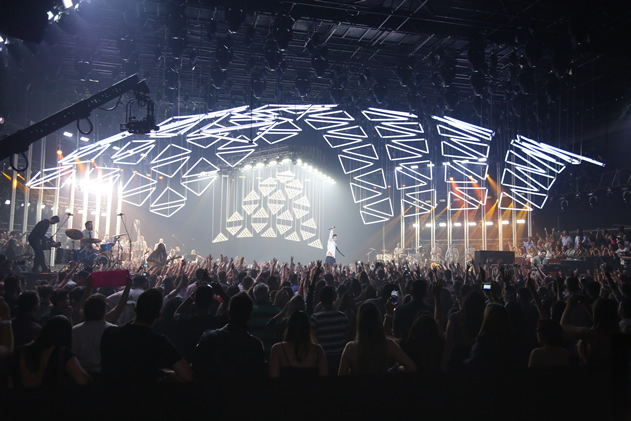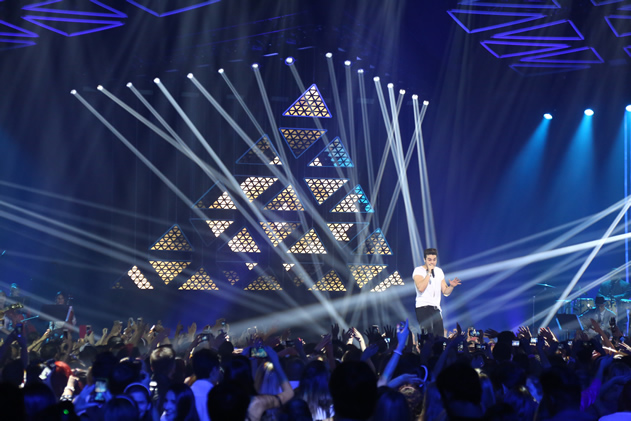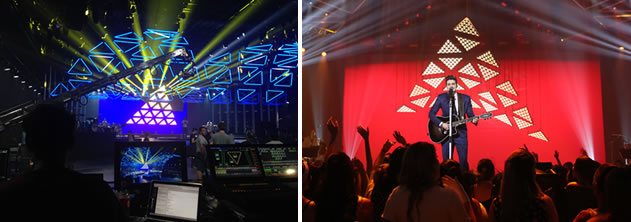 |
|
(All photos courtesy of Christopher Bauder/www.whitevoid.com) |
Dietmar Thomas, Manager Brand & Integrated Communications OLED, from Philips Lumiblade interviews lighting designer Christopher M. Baude about his latest lighting installation in Brazil.
Christopher M. Bauder and his company Whitevoid are responsible for some spectacular light art installations, most recently the „Frontier of Lights“ in Berlin commemorating the 25th anniversary of the Fall of the Wall. His next challenging project took him to Brazil, where he met singer and superstar Luan Santana. Who demanded that OLEDs should play an important role in the shooting of his latest DVD.
Luan Santana? Well this name might not ring a bell outside of Brazil, but in Brazil there is only one word to describe him: superstar! He sells his CDs in the millions; every radio station is playing his music almost constantly. So naturally, when Christopher Bauder, who has an extensive history with Lumiblade OLED lighting, got a call from this gentleman, he knew that this would be a wonderful opportunity for bringing in his expertise in stage lighting, too. “The task in this project was to create the visual background for Santana’s LIVE DVD production using variations of several large-scale kinetic light installations that filled the studio,” recalls Bauder. Because not only classical and historical but also modern futuristic settings were required, Bauder and his team choose a mixture of OLED and RGB LED technology. Both systems were suspended from the ceiling on DMX controlled dynamic cable winches.
 |
The OLEDs with their warm-white color were used in scenes that were set in the ‘20s and ‘40s. Later on, the moving and animated small-scale OLED elements were combined with and complemented by full-color LED triangles. For the grand finale, both systems were then linked with each other and additionally synchronized with conventional moving head spots.
One major challenge was the spatial coordination of the filigree OLED lighting elements with several large-scale stage elements that were also movable. Bauder’s technology, which is high-precision and computer controlled, had to be synchronized with neon signs and other props that were moved manually. At the beginning of the show, the OLEDs are integrated as the luminous ceiling of a reproduction of an old movie-theater entrance.
Then, during a song, this porch structure disappears upwards towards the ceiling while the kinetic OLEDs start moving in the opposite direction, and all that in a matter of seconds. This is where the thin character of the OLEDs really came into play as a design asset. All the same, the interplay with the large and heavy stage elements and the demand for precise timing of all movements and animations was still a huge challenge.
The clients running the DVD production already knew about OLED and had in fact specifically requested this design of kinetic OLED lighting elements for this production. The idea of expanding the installation to include LED lighting elements developed at a later point in the conceptualization phase. All project partners were fascinated by the classic and yet also modern elegance of the mirrored OLED triangles and made a conscious decision to use animated white-only light for this production.
 |
Will Bauder use OLEDs for future projects? “Well, we‘re always working on designs for wall- and ceiling-based OLED lighting systems, sometimes on our own initiative, sometimes under contract.” says Bauder. “The scale of these lighting systems ranges from small wall or ceiling lights right through to concert hall-filling installations, many of them kinetic or movable via cable winches.” Bauder and his team have only just started to scratch the surface of the design potential of OLEDs and the possibilities for their use are endless. With new developments in the size, luminance and bending properties of OLEDs, their design options are sure to multiply even further in the near future.





 CN
TW
EN
CN
TW
EN










